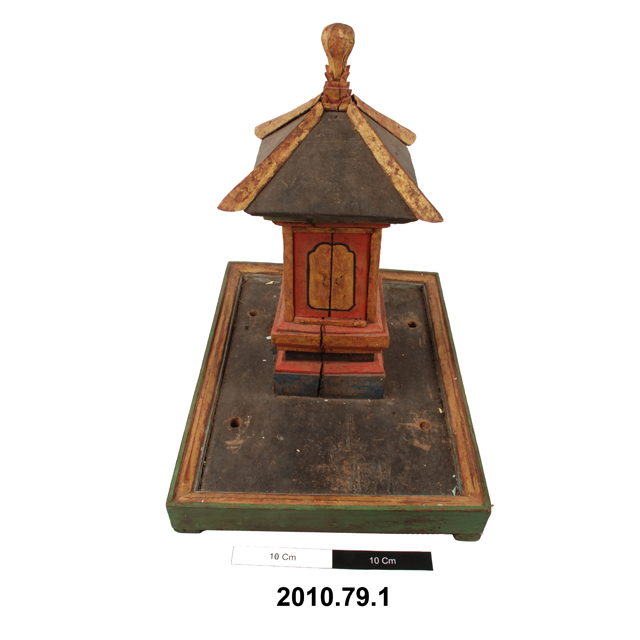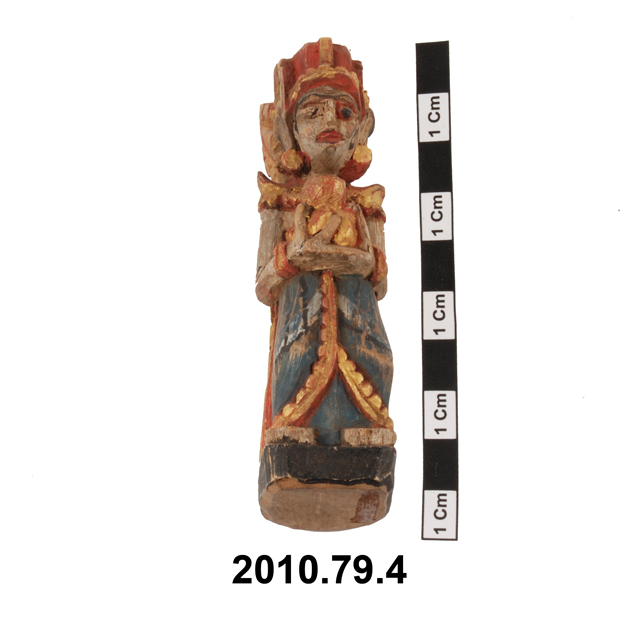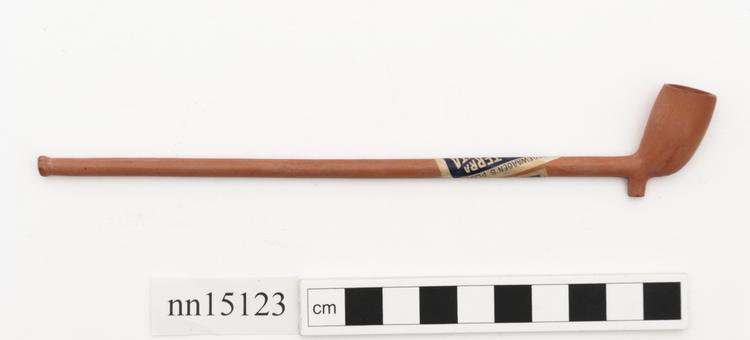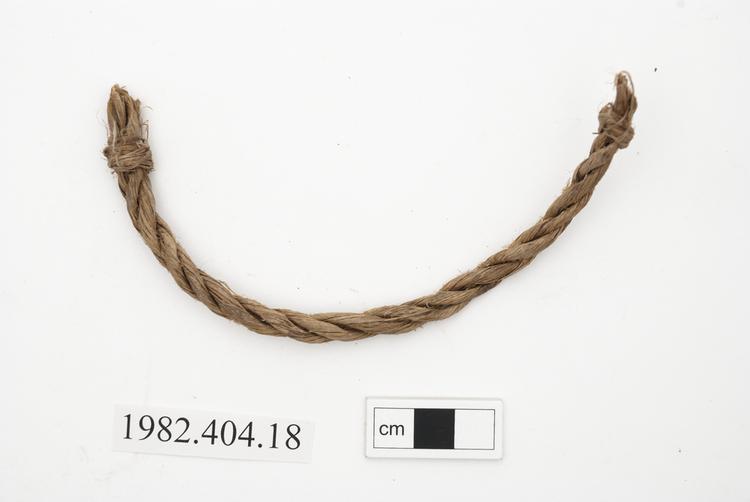
House shrine, gedong konci. Rectangular wooden footed tray painted green on the outside with a bevelled inner frame painted gold, the flat upper surface painted black. At the centre of the tray a rectangular house shrine more or less square in section with a pitched roof and a pair of doors to the front. The house is painted gold and red with swastikas in gold against black on the sides and back. Roof painted a dark colour with gold-painted ridges running from the apex to the roof corners. A rounded finial at the apex. Inside the shrine are two carved and painted wooden figures, one representing male ancestors, the other female ancestors. The female figure has long hair at the back, a long skirt cloth, carries a holy water container, and has gold-painted ear plugs. The male figure has a prominent gold-painted kancut hanging at the front of his short skirt cloth. He also carries a holy water container and has a finial at the top of his headdress. To each side of the house a carved and painted wooden figure of a crowned naga is set into round holes in the tray with a projecting wooden peg, which has broken off and been substiyuted by a nail for one of the nagas. Each naga has an upright tail and upright neck, and an upward curve at the middle of the body. Each naga has an integral fanged mouth, crown and headdress, two necklaces at the front of the neck and curling hair indicated behind. The scales of the body are painted red on the sides and top, the underside in white with black stripes across at intervals. A belt round the body at the top of the curve. A decorative belt close to the end of the tail which ends with a stumpy finial.






